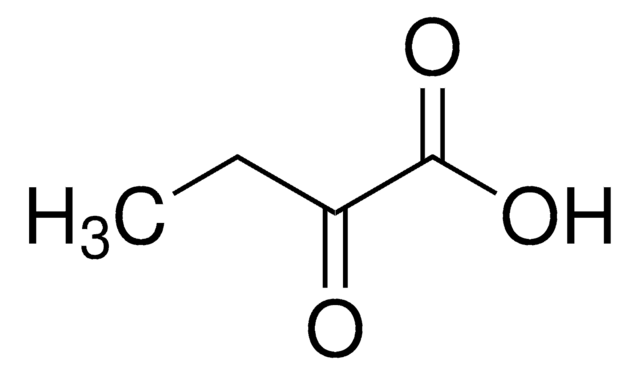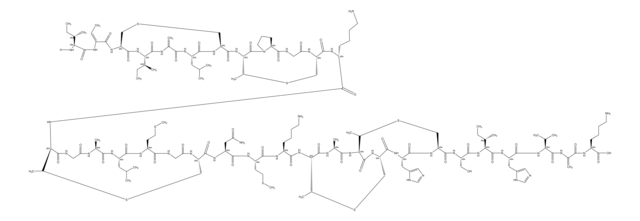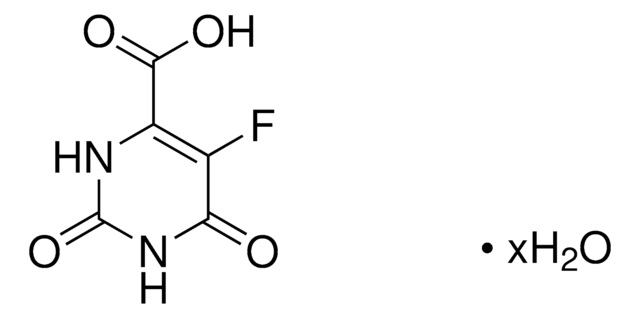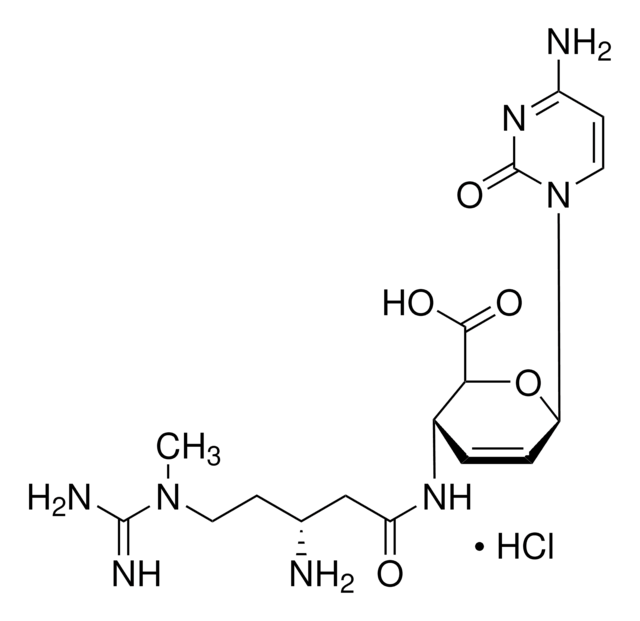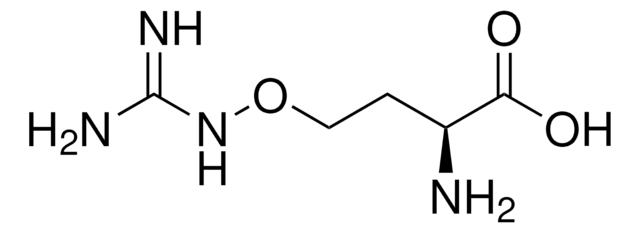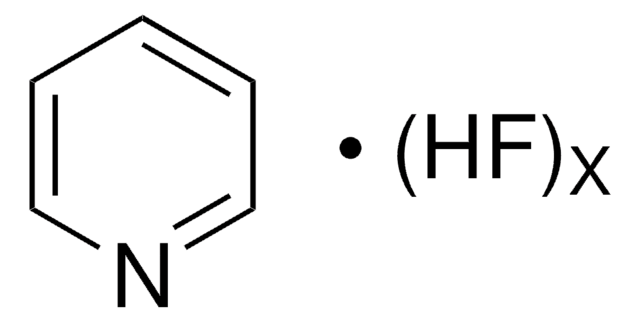74667
Nourseothricin sulfate
≥85% (HPLC)
About This Item
Productos recomendados
biological source
Streptomyces noursei
Quality Level
assay
≥85% (HPLC)
form
solid
color
white to light brown
solubility
H2O: soluble 200 mg/mL
suitability
suitable for (selection agent for molecular genetic research work)
antibiotic activity spectrum
Gram-negative bacteria
Gram-positive bacteria
fungi
mycobacteria
mycoplasma
parasites
viruses
yeast
mode of action
protein synthesis | interferes
storage temp.
2-8°C
General description
Application
Biochem/physiol Actions
Packaging
Other Notes
signalword
Warning
hcodes
Hazard Classifications
Acute Tox. 4 Oral
Storage Class
13 - Non Combustible Solids
wgk_germany
WGK 3
flash_point_f
Not applicable
flash_point_c
Not applicable
ppe
dust mask type N95 (US), Eyeshields, Gloves
Elija entre una de las versiones más recientes:
¿Ya tiene este producto?
Encuentre la documentación para los productos que ha comprado recientemente en la Biblioteca de documentos.
Los clientes también vieron
Nuestro equipo de científicos tiene experiencia en todas las áreas de investigación: Ciencias de la vida, Ciencia de los materiales, Síntesis química, Cromatografía, Analítica y muchas otras.
Póngase en contacto con el Servicio técnico





